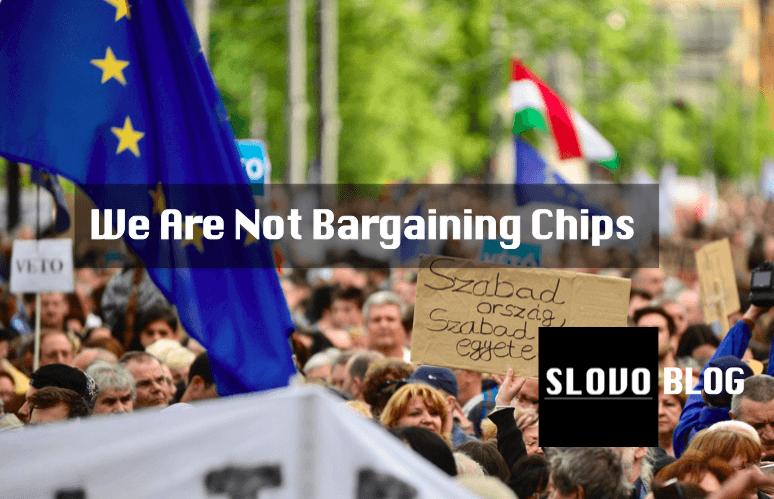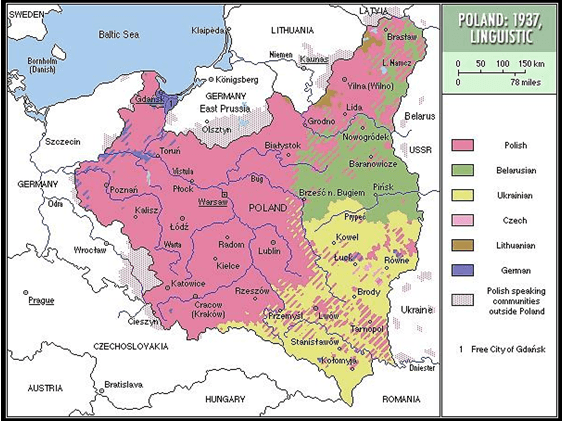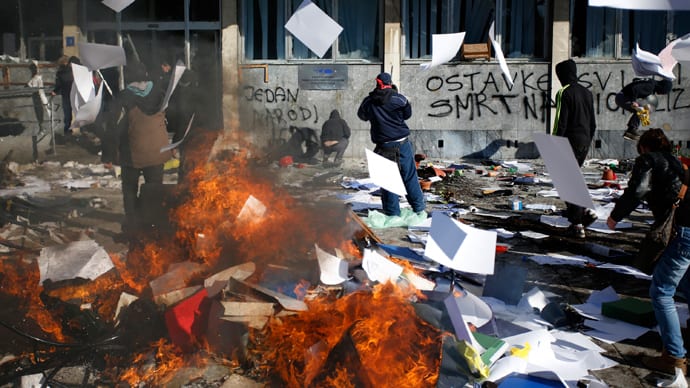Jeffrey Brooks, Thank You, Comrade Stalin!: Soviet Public Culture from Revolution to Cold War & David Hoffmann, Stalinist Values: the Cultural Norms of Soviet Modernity, 1917-1941
‘Thank You, Comrade Stalin!’ by Jeffrey Brooks is written with the intention of explaining the functions of Joseph Stalin’s personality cult. The book covers power dynamics in the Soviet Union from 1917 to his in death 1953, and the implementation of de-Stalinisation. Brooks’s major argument is that because of the states monopolisation of information, the Soviet Union was able to carefully construct a unique cultural understanding for their citizens, which emphasised Stalin as the provider of great economic and social prosperity. Social and economic “gifts” from Stalin were used to justify an obligation on Soviet citizens to work hard, contribute and conform. However, Brooks adds that this constructed cultural understanding for citizens ultimately led to the demise of the Soviet Union.
Brooks was able to construct his argument with a quantitative approach to his research, using of a range of primary resources. Jeffrey Brooks continuously refers to contemporary readings of the press, sampled newspapers and propaganda posters, mainly from the newspaper Pravda. Brooks’s quantitative approach allowed him to discover a number of reoccurring themes in Soviet literature, which became essential to his argument. These themes included an emphasis on metaphors such as “the path”, “the line”, and “the gift” in media outlets.1 The bulk of Jeffery Brooks’s book focuses on the utilisation of “Socialist building”. According to Brooks, Socialist Building was an initiative by Stalin, which drastically changed the political system by limiting public discussion and replacing the previous societal understanding of authority.
David Hoffman’s book ‘Stalinist Values: The Cultural Norms of Soviet Modernity, 1917-1941’ is a worthy contribution to “The Great Retreat” debate stimulated by Nicholas Timasheff. Timasheff argues that in 1934 the offensive broke down, and the Soviet state began to withdraw from its commitment to the socialist ideology.2 Hoffman disagrees, and declares that at no point did Stalin articulate a retreat from socialism. He adds that Stalinism meant a continuation of a commitment to social transformation, and the creation of the New Soviet Person. Hoffman contends that this was a sharp contrast with traditional Tsarist culture.
The most convincing aspect of Hoffman’s argument lies in his view that many of the Stalinist policies that have been accused as a retreat of socialism can instead be understood as pragmatic solutions to political, social and economic dilemmas in the Soviet Union. Hoffman uses Soviet patriotic and nationalistic propaganda as an example, deeming it merely as a means of mobilising society in the defence of the socialist state in a time of international uncertainty. According to Hoffman, Soviet consumerism was distinct to Western Liberalism because it maintained an emphasis on collectivist ideals, whilst providing incentives for hard work. 3
Hoffman also addresses the supposed ‘retreat’ to a patriarchal view of the household in the Stalinist era. Hoffman instead explains it as a measure to deal with low birth rates rather than a withdrawal from the socialist ideology. These changes in social policy should instead be understood as pragmatic measures used to maintain the Socialist state in a time of great political stress.
Hoffman acknowledges the use of traditional symbols, institutions and appeals by Stalin and the political elite. However, he adds that these were used merely for mass mobilisation
purposes as a means of strengthening the new order.4 Hoffman summarises Stalinism as a consolidation of Socialism, rather than a retreat from it.5 According to Hoffman, the Soviet Union remained fundamentally Socialist throughout the period referred to as “The Great Retreat”. The planned economy remained, state ownership of the means of production continued, and the Party’s vanguard role in leading the country towards communism was sustained under the rule of Stalin.6
Brooks’s understanding of the functions of Stalin’s cult of personality helps to develop Hoffman’s argument against the idea of a “great retreat”. Hoffman stresses that although some of Stalin’s policies had not derived from a socialist ideology, the states infrastructure remained fundamentally socialist under Stalin, and thus no retreat was undertaken.
Hoffman writes that “Presenting Stalin as the personification of the Soviet system provided a tangible symbol to which individuals could attach their loyalty. The cult provided a human face that appeared to care about people’s welfare”.7 Hoffman is suggesting that Stalin’s cult of personality was a powerful tool in restructuring society’s understanding of power dynamics in the Soviet Union. ‘Thank You, Comrade Stalin!’ develops Hoffman’s argument of a Socialist continuation under Stalin, because it offers a tangible explanation for the use of an authoritarian cult of personality in a socialist society.
Brooks offers a useful explanation into the purposes of the Cult of Stalin. He begins, by explaining Socialist realism as a state led initiative to promote the idea that life ought to be portrayed how it should be, and not necessarily as it was.8 Socialist realism is a key aspect of Brooks’s argument, because it manipulated society into appreciating the utopian aspect of the Soviet Union, and ultimately led people to believe that life was better than it was. The economic and social prosperity that was portrayed in propaganda was heavily attributed to
Stalin. Stalin was responsible for the provision of all social benefits and all that was good in Soviet life according to media outlets. This understanding of Stalin’s personality cult is useful to Hoffman, because it stresses the mere purposes of mobilisation, and not a withdrawal from the socialist ideology.
Brooks continues to raise another important theme, which advances Hoffman’s claim.
Brooks explains the relevance of Stalin as provider of “the gift”. Brooks introduces his conception of a “moral economy”9 which deeply resided in Soviet culture during Stalin’s time of influence. The demand for society to acknowledge Stalin’s unprecedented influence in the production of social and economic prosperity was met with an expectation for citizens to repay this favour through hard work and conformity. Hoffman would argue that this constructed power dynamic was a means of enhancing the socialist state by use of traditional ideals and understandings of power.
Jeffrey Brooks states that although Stalin acknowledges the contradictions of an authoritarian personality cult in a socialist society, he used it to promote a very unique and precise understanding of state legitimacy and authority. This new understanding of power was used to shape a unified national agenda, with a new understanding of Soviet society, and national identity.10 The legitimacy of orders from institutions replaced the need for rational explanations of behaviour or orders from the state. 11 Brooks makes this point, because this rhetoric remained central in legitimising Stalin’s authoritarian style to governance. Hoffman would argue that this constructed understanding of state legitimacy was used to strengthen the socialist infrastructure in the Soviet Union.
Brooks and Hoffman however fail to explain what the utilisation of prerevolutionary ideals offered to Stalin that previous Bolshevik discourses on power did not. Jan Plamper offers an explanation into why Stalin’s cult of personality was so effective in seizing the public’s
imagination. She argues that since Russia’s Christianization (988), the Russian sovereign was both head of the Russian Orthodox Church and the head of the state12. Thus historically, Russia was used to being centered on a single person, and a retreat to this conventional understanding of authority was greatly advantageous for Stalin.
Another question that Brooks and Hoffman fail to address is the extent to which the Soviet population bought into and supported the reconstructed Soviet culture. Hoffman briefly mentions that some members of the military, party and Stakhanovite workers held a genuine reverence for Stalin. Hoffman also highlights that many also privately criticised Stalin and the cult. He adds, “much of the population viewed Stalin and other leaders as oppressors rather than benefactors.”13 However this point remains underdeveloped. Perhaps Brook and Hoffman’s arguments may have been more convincing if their research had comprised of a greater level of qualitative methods such as readings from private letters, diaries and other personal documents.
One text that does this well is Nora Dudwick’s “When Things Fall Apart”. Dudwick offers an analysis of poverty in the Soviet Union through a number of first hand interviews and readings of personal contemporary texts, and proves that qualitative research can offer a useful insight.14 Both Brooks and Hoffman’s arguments could benefit from implementing some of these research methods, in order to give a more humanist understanding of the period covered.
Brooks concludes that Stalin was able to implement a unique cultural understanding for the Soviet Union. However, he contends that it was ultimately counter productive and led to the dismissal of the state. Brooks accuses Stalinist Soviet culture of having left little room for critical commentary, which would have allowed the state to recognise its own weaknesses,
and thus adapt. Brooks adds that the monopoly of information also contributed to the decimation of the state because it gave little room for an exchange of informal information on an international level, which was necessary for scientific and economic development.15
This conception complies with Hoffman’s understanding on the demise of the Soviet Union. Hoffman claims that state led attempts to change people’s lifestyles and values through coercion and violence ultimately led to the dissolution of the Soviet Union. He continues to say “social change must be gradual and consensual, as violence only achieves superficial change and failed to change the way people thought.”16 Brooks and Hoffman agree that the authoritarian nature of the Soviet Union greatly hampered it from flourishing and achieving the social harmony that it set out to accomplish.
Brooks and Hoffman offer insightful conclusions, however neither authors offer an explanation into the nature of Stalin’s terror nor the extent of coercive measures conducted by the state. Although neither book intend to narrate the coercive measures of the Soviet Union, some general background would be useful for some readers. Readers without a pre-existing understanding of the level of oppression conducted by the Stalinist state may find their arguments unconvincing.
Both ‘Thank You, Comrade Stalin’ and Hoffman’s ‘Stalinist Values’ have provided a great contribution in the study of the Soviet Union, and its attempts to create a unique, stringent and powerful cultural understanding of state authority. However, because both texts deal with such a wide scope of study, they can at times allocate too much emphasis on the collective at the expense of personal experience, which can provide relevant and useful insights. An adoption of a balanced approach to the use of qualitative and quantitative research methods may have benefited both arguments.
Although both texts require development in some areas, they provide a number of conclusions that are difficult to scrutinise. In particular, Jeffrey Brooks’s convincing claim that Stalin was able to use traditional and popular understanding of power to enhance the hyper-centralisation of the state and create a new cultural understanding the Soviet Union. David Hoffman offers an engaging contribution to the Great Retreat debate, and presents many plausible reasons to support the notion that the Soviet Union remained fundamentally socialist throughout its existence.
Bibliography
Brooks, Jeffrey. Thank You, Comrade Stalin!: Soviet Public Culture From Revolution To Cold War, (Princeton University Press: New Jersey, 2000).
Dudwick, Nora. When Things Fall Apart: Qualitative Studies of Poverty in the Former Soviet Union, (World Bank Publications: Washington, 2002).
Hoffman. L. David, Stalinist Values: The Cultural Norms of Soviet Modernity 1917-1941, (Cornell University Press: New York, 2003).
Plamper, Jan. The Stalin Cult: A Study in the Alchemy of Power, (Yale University Press: Connecticut,1970).
Timasheff, Nicholas. The Great Retreat: The Growth and Decline of Communism in Russia, (Ayer Co Publishers: New York, 1972).
 Close
Close








